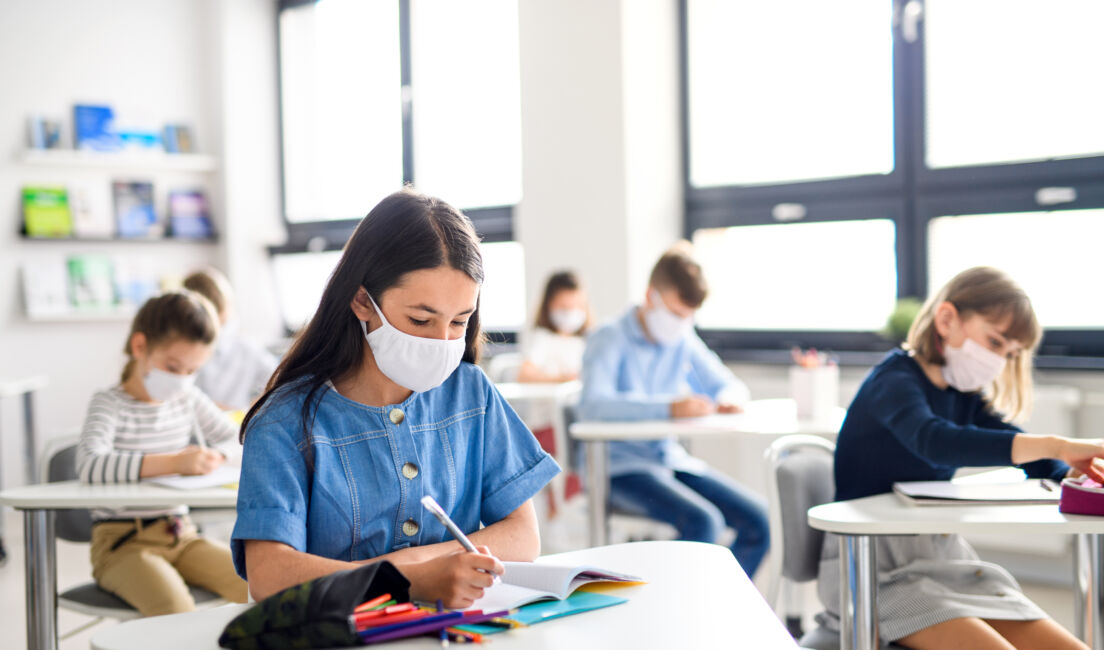The cost of failing, translating agreement into policy solutions, and 5 links worth your time
What’s best for the kids

One of the most difficult things about the past year is the feeling I’ve often had of total helplessness when it comes to my children’s education.
I’m confident that everyone involved is working hard to serve students, but on the days when my kids are at home, stuck in front of screens instead of at school with their teachers and friends, I’m equally confident that we’re still failing our kids.
The cost to the most vulnerable
As vaccines become widely available, we can expect a return to full-time, in-person instruction for kids. That’s encouraging to me, or, it was, until I read an article about the long-term impact of this pandemic on children. The author noted that a vaccine won’t inoculate us against the “trauma, illness, and disruption” that children have already suffered.
There is evidence of increased mental-health related illness among children and teenagers, decreases in their academic performance, and learning gaps that will last long beyond vaccination.
What we can agree on
In all the arguing over the past year, one thing we all agree on is the urgency of getting kids safely back to their normal educational routines. Unfortunately, that shared objective hasn’t translated into unanimity on policy, and if you doubt that, just ask politicians, teachers, and parents in the city of Chicago.
On January 24th, the Chicago Teachers Union voted to reject a return to in-person classroom instruction. Robby Soave of Reason Magazine thinks that vote stood in the way of students’ best interests and that teachers were holding kids and parents “hostage.” Members of the Chicago Teachers Union, on the other hand, said they “desperately want to be back in classrooms” with students, but they felt the only way to ensure their safety was to take collective action against the mayor and the school district.
Exceptional circumstances offer opportunities for exceptional solutions
If we see everything in “us vs. them” terms, then we’re forced to choose sides. In this case, though, everyone agreed on the desired outcome: getting kids safely back into classrooms. “Taking sides” is a distraction that students who are already falling behind can’t afford.
Eventually, the union and the city reached an agreement to gradually re-open schools, but not before Mayor Lori Lightfoot stepped in to exercise the control her office retains (unlike other big cities, including Los Angeles and San Francisco). Now, even though an agreement has been reached, the relationship between the mayor and the union is more acrimonious than ever.
If we persist in framing things as either/or, someone will always lose. Across the country, however, educational alternatives that would never have gotten off the ground in “normal times” are receiving their first hearing. Instead of framing issues in terms of winning and losing, teachers unions, politicians, and journalists (like parents and administrators), must work together to support the one goal—getting kids safely back to the classroom—that everyone agrees is most urgent.
This week, our five links highlight that urgency, the difficulty of taking action (despite agreement on the goal), and the opportunity that such circumstances offer people who normally disagree. I hope you’ll share and discuss these with friends as you think about how best to serve your own children and those in your community.
5 links worth your time
- Covid is having a devastating impact on children – and the vaccine won’t fix everything, NBC News – Vaccines are good news, but they won’t reverse the damage many children have already suffered as a result of distance learning. In this long piece, Erin Einhorn takes a careful look at data about the impact of COVID-19 educational adjustments and the long-term implications for this disruption in students’ lives.
- Chicago Teachers Union Refuses Order To Go Back to Classrooms, Reason – Chicago is one of a number of large, urban school districts where teachers refused to go back to the classroom until their demands were met. Robby Soave, a senior editor at Reason Magazine, calls this refusal “unreasonable” and argues that teachers are holding students and parents “hostage.”
- An open letter to Chicago public school parents, Chicago Teachers Union – On February 7th, Chicago Public Schools and the Chicago Teachers Union (an American Federation of Teachers chapter) reached a tentative agreement that would see teachers return to in-person learning for some of the nation’s most vulnerable students. In this open letter of February 4th, three days prior to the tentative agreement, the CTU explained its position.
- The Union Leader Who Says She Can Get Teachers Back in Schools, The New York Times – The president of the American Federation of Teachers is in a difficult position. On the one hand, she wants to represent her union members, many of whom are adamantly opposed to reopening schools. On the other hand, she wants to help President Biden (a longtime ally of the AFT) meet his goal to reopen schools within the first 100 days of his presidency. Derrell Bradford, our guest on the current episode of the Civil Squared podcast, is quoted in this article about Randi Weingarten, president of the AFT.
- Is America’s Educational System Becoming More Pluralistic? The Atlantic – Reihan Salam, president of the Manhattan Institute, reviews the strange bedfellows that have emerged from the challenge of education in a pandemic. COVID-19 has prompted some opponents to school-choice to rethink their objections and reach out to those they previously would not have considered allies. That could translate into big gains for all kids.
Photo by Halfpoint on Adobe Stock